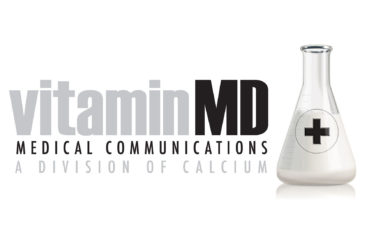Next time you’re in the doctor’s office, turn your attention to what’s playing on the waiting room TV or the interactive wall boards in the examination rooms. You will likely watch a carousel of ads from pharma companies hoping that you and other patients turn your passive perception of the ad into active engagement with the pictured product.
This contextual marketing is meant to pique patients’ interest, prompting them to either take out their cellphones to conduct an online search while they wait for their appointment, and/or ask their doctors about the medication they have just seen on the waiting room TV. After searching for more information (either online or from their doctor), most patients will eventually land on the pharma company’s website to learn more.
It’s an incredibly targeted approach to help the appropriate audience move through their decision journeys—and it works. Almost one in five patients actually bring up a drug they’ve seen in advertising1 during a medical visit while one in 10 say they even ask directly for the prescription. These kinds of numbers help explain why the pharma industry spends more than $6 billion per year on drug ads.
Beyond the walls of the doctor’s office, however, pharma advertising is incredibly complex. Despite increased TV ad investment and new targeting methods, advertisers are still lacking a way to measure the consumer journey as it happens. As the advertising landscape expands with new formats and measurement options, it’s widely understood that TV is in need of an upgrade in how it’s held accountable.
A recent PulsePoint survey found that 42% of pharma marketers use post-exposure impact, measured via offline studies, to determine the effectiveness of their Connected TV (CTV) buys.2 Other measures used include lift in new prescriptions (17%) and audience quality (13%). None of these provide immediate feedback, keeping advertisers blind to performance until several weeks post-campaign, at best, and many of these measures also suffer from sample issues which limit the actionability of their findings.
The Customer Journey
The pharma customer journey is often long, with many starts and stops, which is why real-time measurement that bridges the gap between awareness and conversion in this space is so crucial.
At the start of a new campaign, advertisers will invest heavily in general awareness for new products, and then typically institute a more hyper-targeted approach over time. The idea is to initially advertise the new drug to those who might benefit from it, in addition to their family members, friends, other loved ones, and caretakers, and eventually narrow the audience focus as new anonymized audience data becomes available.
Over time, pharma companies employ various targeting techniques to reach the uber-relevant fraction of that population: those who can benefit from and take the promoted drug. This has caused a massive surge in ad investment across Convergent TV and online channels alike, which have unique capabilities to target such audiences.
Because the pharma customer journey could take as long as several years to complete, it is dramatically different from other industries. This distinction begs the question: How should pharma advertisers incorporate traditional channels such as TV into the consumer journey in a way that not only drives awareness but is also held to a performance metric that provides visibility into that lengthy consumer journey?
The ability to leverage TV as a performance channel requires two innovations: a new performance measurement that captures the key moments of engagement as they occur and a measure that is meaningful across the entire journey.
TV as a Performance Channel
Five or 10 years ago, brands didn’t have much in the way of TV ad measurement outside of Reach. Floridians may have seen 30 pharma drug ads per day simply because they live in an area highly populated by older Americans. Today, thanks to addressability, that audience targeting has become much more precise, and advertisers have more options to measure ad performance.
Pharma advertisers are more limited than other consumer-facing categories in the information available to them on their consumer set as part of HIPAA compliance. Once they do connect with a wider consumer base, however, they can encourage those interested to visit their branded website to learn more. At that point, advertisers have an actionable way to digitally re-target an interested consumer via anonymized behavioral data without HIPAA violations.
This data becomes incredibly useful in building new audiences with higher degrees of efficiency, but it is still difficult to identify which offline channel attributes most successfully contributed to this digital hand raising.
Challenges for Pharma TV Advertisers
Pharma advertisers may face several challenges in strategizing and measuring ad buys, such as:
1. The lack of accountability for TV measurement. While digital advertising can tie results to a direct action such as click-through rates, historically TV has not been held to the same behavioral standard.
Advertisers have had to rely on surveys to assess consumer consideration or intent, but they only capture sentiments and attitudes, not behaviors. People are notoriously bad at predicting their own future behavior, and surveys generalize a small sample of these poor predictions to the significantly larger TV audience, making the results even less actionable.
2. Increased fragmentation leads to activation and measurement challenges. As costs increase across linear and streaming, advertisers are left to figure out how they can justify the increased spend.
Linear TV costs are increasing and offer a wide reach. Likewise, CTV costs are increasing and offer the ability to create niche audiences that are also expensive as a result of supply and demand. The need to prove value for each channel remains and continues to be limited by the lack of applicable data sets and metrics that are attributable to both channels.
With the increase in fragmentation, advertisers struggle to sort through multiple reports and data sources to try and create a cohesive look at how their video investment performed as a whole. This contributes to increased data and measurement fees as the data and measurement space remains similarly siloed as the TV and video space.
A unified metric that enables a holistic view of various siloed environments will help compare various video formats on an even playing field.
3. Significant measurement lag time. Understanding the immediate impact of TV video advertising and how it affects the customer journey is vital for all categories, but especially so for pharma. That’s because of the many steps drug consumers have to take between identifying a drug they are interested in and when they actually receive a prescription from a doctor.
This window could be six weeks, six months, or even two years, so it’s difficult for advertisers to pinpoint exactly which ads are their strongest with current measurement methods. If they wait to survey their audience (attitudinal research) or see if they buy from you (attribution), then the signal will be either too weak or too late to be actionable.
Search as the Premiere Currency
These challenges can be solved using new alternative behavioral measurement metrics, such as online consumer search, which provides real-time results on how consumers are engaging with brands. The ability to see consumers’ online search for your brand or drug within minutes of an ad airing enables marketers to see a clearer picture of the customers’ journey by bridging the gap that exists between brand awareness and conversion. This is particularly important for pharma given the aforementioned complex journey their customers must take from ad to Rx.
In fact, Share of Search, first introduced by Les Binet and the Institute of Practitioners in Advertising (IPA) Think Tank,3 has been thrust to the fore as a key performance indicator (KPI) that provides immediate and predictive measurement. EDO research in conjunction with the IPA Think Tank asserts that 83% of a brand’s Share of Search is directly correlated to their Share of Market, proving that search is an accurate and immediate way to measure ad performance and link it through to sales activity. The research demonstrates that high-performing advertising essentially equates to an increase in online search, which in turn signals increased market share.
With search, television can be as responsive and accountable as digital marketing, which is great news for TV advertisers and those who may have dismissed it in the past as limited to only brand awareness.
A Look to the Future
The rise of Convergent TV has created a scenario for advertisers where they can maximize the critical consideration and evaluation phases of the customer journey using TV and video advertising. This is a direct result of the ability to expand targeting and then to measure reliably with both stability and sensitivity through search data across multiple channels and platforms.
As pharma advertisers decide on what new performance currencies to implement as part of their ad strategies, they need to be able to look at their convergent advertising campaigns with a single lens versus two siloed tracks bought and planned for differently. How does one platform impact the other? Are they separate audiences, is there overlap, is reach increased or frequency, or is it both? And how does that impact decay effects in digital video or TV ads?
It’s important to find a single data set that bridges these entities so teams can see how all of their ads are performing at once, with a uniform KPI, and in real time. Consumers have spread their TV watching across multiple channels and devices—from smart TVs to smartphones and the streaming sites across them—search can be the metric that unifies an advertisers’ TV and video measurement ecosystem, and it might just be the answer to their measurement woes.
References:
3. https://mediatel.co.uk/news/2021/10/12/ipa-share-of-search-represents-83-of-a-brands-share-of-market.









